Unique Dirndl Costumes: A Beautiful Selection for You
The Dirndl Costumes are a traditional Bavarian dress that has become emblematic of German culture, particularly associated with festivities like Oktoberfest. Its origins can be traced back to the Alpine regions of Germany, Austria, Switzerland, and parts of Italy, where it was initially worn by peasant women as practical work attire.
Over the centuries, the Dirndl Costumes evolved from a simple garment into a symbol of Bavarian identity and heritage.The Dirndl’s history dates back to the 16th century when it began as functional clothing for rural women. Originally designed for everyday labor, it consisted of a fitted bodice and a full skirt, often accompanied by an apron. By the 19th century, the Dirndl gained popularity as a folk costume during regional festivals and celebrations, particularly in Bavaria.
Its association with Oktoberfest solidified its status as a cultural icon when the festival began in 1810, promoting traditional attire among attendees.A traditional Dirndl is comprised of several key elements. The bodice is typically fitted and features a low neckline, which enhances the feminine silhouette.
It may be adorned with intricate embroidery or decorative elements that reflect regional styles. Worn underneath the bodice, the blouse is usually white and can vary in style from simple to elaborately designed, adding to the overall elegance of the outfit. The skirt is wide and high-waisted, allowing for ease of movement.
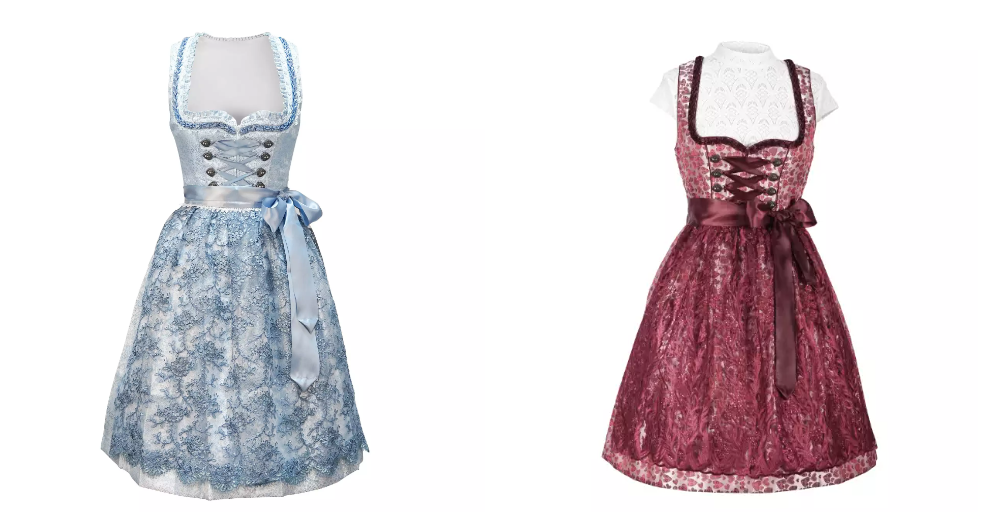
Dirndl Costumes can come in various lengths, from knee-length to ankle-length, depending on personal preference and regional traditions. The apron is an essential part of the Dirndl, often matching or complementing the dress. It serves both functional and decorative purposes, adding layers to the overall look.The Dirndl is not merely a piece of clothing; it embodies a rich cultural narrative.
It represents a connection to Bavarian heritage and is worn with pride during festivals and celebrations. The choice of colors, patterns, and accessories can denote regional identity or personal style. For instance, wearing the apron tied on the left side indicates that a woman is single, while tying it on the right signifies that she is taken. This “language” of the Dirndl adds an intriguing social dimension to its wear.
In recent years, designers have reinterpreted the Dirndl for contemporary fashion. Variations now include modern cuts, fabrics, and embellishments that appeal to younger generations while retaining traditional elements. This evolution has allowed the Dirndl to transcend its origins as purely festive wear; it can now be seen at various events beyond Oktoberfest, including weddings and cultural gatherings.The Dirndl remains a timeless symbol of Bavarian culture and femininity.
Its blend of tradition and modernity makes it not only a beautiful garment but also a representation of cultural pride and identity. Whether worn during Oktoberfest or other celebrations, the Dirndl continues to captivate people around the world with its elegance and historical significance. As it evolves with fashion trends while honoring its roots, the Dirndl Costumes stands as a testament to the enduring appeal of traditional attire in contemporary society.
Historical Evolution of the Dirndl Costumes
The Dirndl Costumes, a traditional Bavarian dress, originated in the 16th century as practical workwear for women in the Alpine regions of Germany and Austria. Initially, it was designed for rural laborers, featuring a simple bodice and full skirt.
By the 19th century, the Dirndl began to gain popularity among the middle and upper classes, transitioning from a functional garment to a symbol of national pride. This shift was influenced by urban trends and nostalgia for rural traditions.
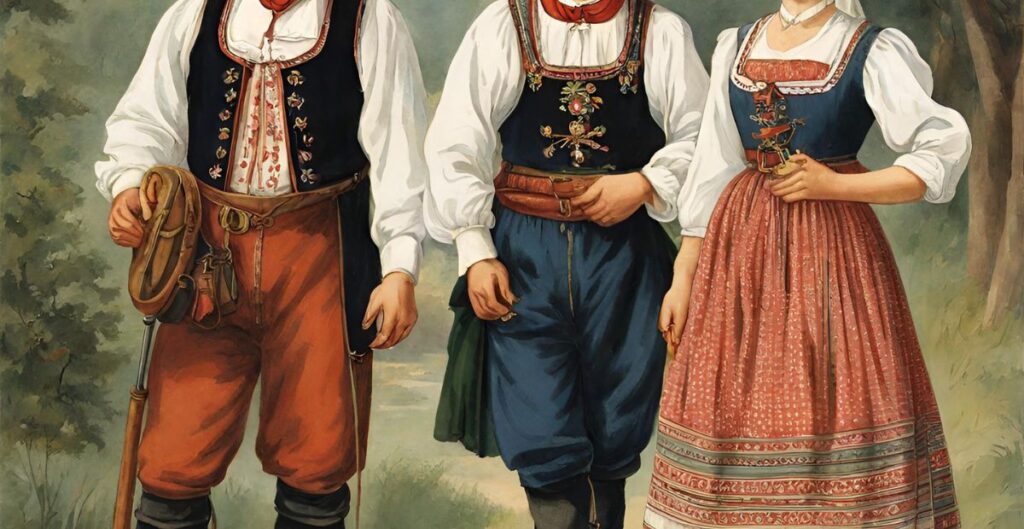
The late 19th century saw the Dirndl Costumes become associated with Bavarian identity, particularly during Oktoberfest, which began in 1810.Throughout the 20th century, the Dirndl faced challenges, including appropriation by the Nazi regime and a decline in popularity during World War II.
However, it experienced a renaissance in the 1970s, fueled by events like the Munich Olympics and growing interest in traditional attire. By the late 20th and early 21st centuries, designers embraced modern interpretations of the Dirndl, making it a fashionable choice for various occasions. Today, the Dirndl is celebrated not just as a cultural artifact but also as a stylish garment that continues to evolve while honoring its rich heritage.
Key Components of a Dirndl Outfit
A Dirndl outfit consists of four key components: the bodice, skirt, apron, and blouse. The bodice is the fitted top of the dress, designed to accentuate the waistline and bust. It can feature various neckline styles, including square, sweetheart, or V-neck, and is typically secured with hooks or buttons.
The skirt is often full and flouncy, available in lengths ranging from above the knee to ankle-length. It is usually made from lightweight fabrics such as cotton or silk and may include an underskirt for added volume.
The apron is worn over the skirt and serves both functional and decorative purposes. It can be made from matching or contrasting fabric, providing a pop of color and dimension to the outfit. The apron is typically fastened at the waist with a ribbon bow or clasp.
Finally, the blouse is worn underneath the bodice and is usually made from cotton or linen. It can feature short or long sleeves and may include intricate embroidery or lace detailing, enhancing the overall elegance of the Dirndl Costumes ensemble. Together, these components create a classic look that reflects Bavarian culture and tradition.
Choosing the Right Fabric for Your Dirndl Costumes
Choosing the right fabric for your Dirndl Costumes are essential for comfort, style, and durability. Commonly used fabrics include cotton, linen, wool, silk, and modern blends.Cotton is highly favored for its breathability and softness, making it ideal for all-day wear. It is also easy to dye and print, allowing for a wide variety of colors and patterns.
Linen is another excellent choice, known for its moisture-wicking properties and rustic charm; it keeps the wearer cool in warmer weather.For cooler climates, wool provides insulation and retains warmth while being resistant to odors and dirt. It is durable and maintains its shape well. Silk, on the other hand, offers a luxurious feel with a natural sheen, making it perfect for more formal occasions.
It drapes beautifully but requires careful handling.Modern fabric blends, such as polyester-cotton mixes, are also popular due to their vibrant colors and ease of care. They are often machine-washable and quick-drying, appealing to contemporary fashion sensibilities. Ultimately, the choice of fabric should reflect personal preferences regarding comfort, style, and the specific occasion for wearing the Dirndl.
Styling Tips: How to Wear a Dirndl Costumes
When styling a Dirndl Costumes, several key elements come into play to create a stunning and authentic look. Start with the fit of your Dirndl; the bodice should be snug but comfortable, accentuating your waist and bust. Ensure that the skirt falls to an appropriate length, typically knee-length or mid-calf.
Choosing the right blouse is crucial; it should complement the Dirndl’s neckline and can feature various styles such as short puff sleeves or long sleeves with lace detailing. The apron is another important component; it should be tied around your natural waist, with the bow positioned according to your relationship status—left for single, right for in a relationship, and center for widowed.
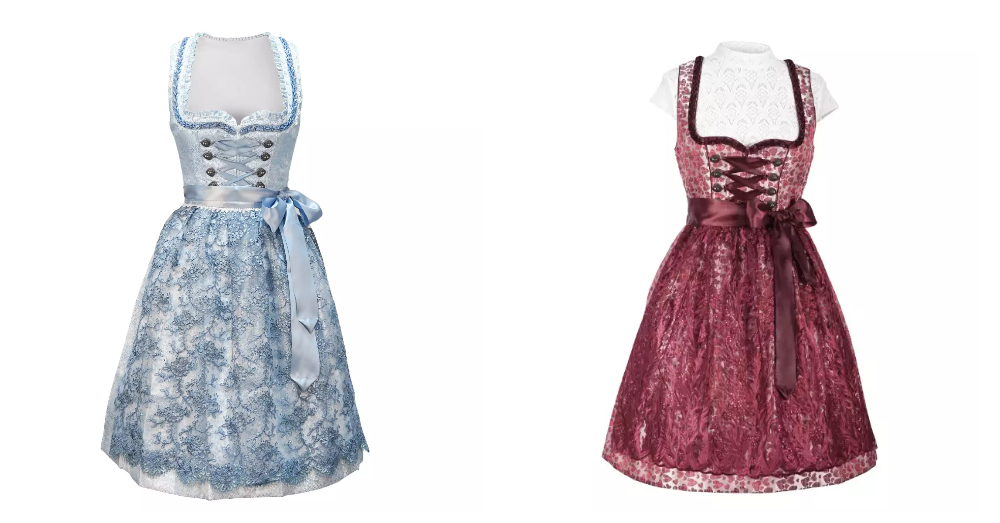
Footwear plays a significant role in completing your outfit. Opt for shoes that match the style of your Dirndl, whether they are traditional flats or elegant heels. Adding accessories like delicate jewelry, hairpins, or floral elements can enhance your look without overwhelming it.For hairstyles, consider braids or updos adorned with ribbons that match your Dirndl. This adds a charming touch while keeping your hair stylishly in place.
Remember to choose colors and patterns that reflect the occasion, whether it’s a festive celebration or a casual outing, ensuring you feel confident and comfortable in your Dirndl.
Accessorizing Your Dirndl Costumes: Jewelry and More
Accessorizing your Dirndl Costumes is essential for enhancing its charm and personalizing your look. Jewelry plays a significant role in this process, with options ranging from traditional pieces to modern interpretations. Charivari, a decorative chain often adorned with coins or charms, is a classic choice that can be worn around the neck or attached to the bodice of the Dirndl.
This piece not only adds a touch of elegance but also serves as a symbol of heritage.In addition to Charivari, consider incorporating pendant necklaces featuring motifs like edelweiss or hearts, which complement various necklines beautifully. Chokers made from velvet or adorned with small pendants can also add a stylish flair.
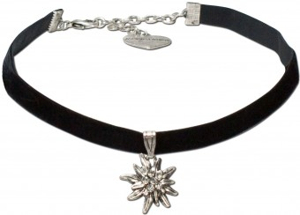
Earrings are another important accessory; studs offer simplicity, while hoops or dangling earrings can provide a bolder statement.Footwear should not be overlooked; traditional Trachtenschuhe, such as Mary Janes or loafers, enhance the overall look while ensuring comfort. Hair accessories like floral crowns or decorative pins can elevate your hairstyle and tie the outfit together.
Finally, opt for a chic bag, such as a heart-shaped clutch or an apron purse, to keep essentials handy without compromising style. By thoughtfully selecting these accessories, you can create a stunning and cohesive Dirndl Costumes ensemble that reflects your personality.
The Significance of the Dirndl Costumes Apron
The Dirndl apron holds significant cultural and symbolic meaning within Bavarian and German traditions. Historically, the apron was a practical garment worn by women engaged in domestic work, protecting their dresses from dirt and wear. Over time, it evolved into a crucial element of the Dirndl outfit, serving both functional and decorative purposes.
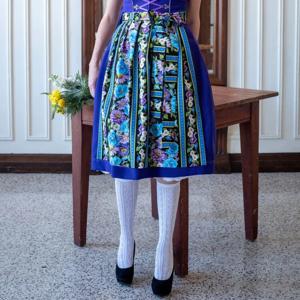
One of the most notable aspects of the Dirndl apron is its role in indicating marital status. The placement of the apron strings communicates important social cues; tying the apron on the left side signifies that the wearer is single and available, while tying it on the right indicates that she is married or in a committed relationship. If the bow is tied at the back, it often suggests that the individual is widowed or uninterested in romantic advances. This practice dates back to the 19th century and reflects a discreet way for women to express their relationship status to potential suitors.
Additionally, the style of the bow can convey flirtatious intentions. A bow tied at the front suggests openness to socializing, while a knot at the back can deter unwanted attention. These subtle cues highlight the Dirndl apron as more than just an accessory; it embodies a rich tapestry of cultural heritage, femininity, and social interaction within Bavarian society. As modern interpretations of the Dirndl continue to emerge, the significance of the apron remains a cherished aspect of this traditional attire.
Caring for Your Dirndl Costumes: Maintenance and Storage
Caring for your Dirndl Costumes involves proper maintenance, cleaning, and storage to ensure it remains beautiful and lasts for years. Regular care starts with hanging your Dirndl on a padded hanger in a cool, dry place, away from direct sunlight to prevent fading and wrinkles.
To keep it fresh between wears, give it a gentle shake to remove dust.When it comes time for a deeper clean, handwashing is the preferred method, especially for delicate fabrics like silk or linen. Fill a basin with lukewarm water and add a mild detergent designed for delicate materials.
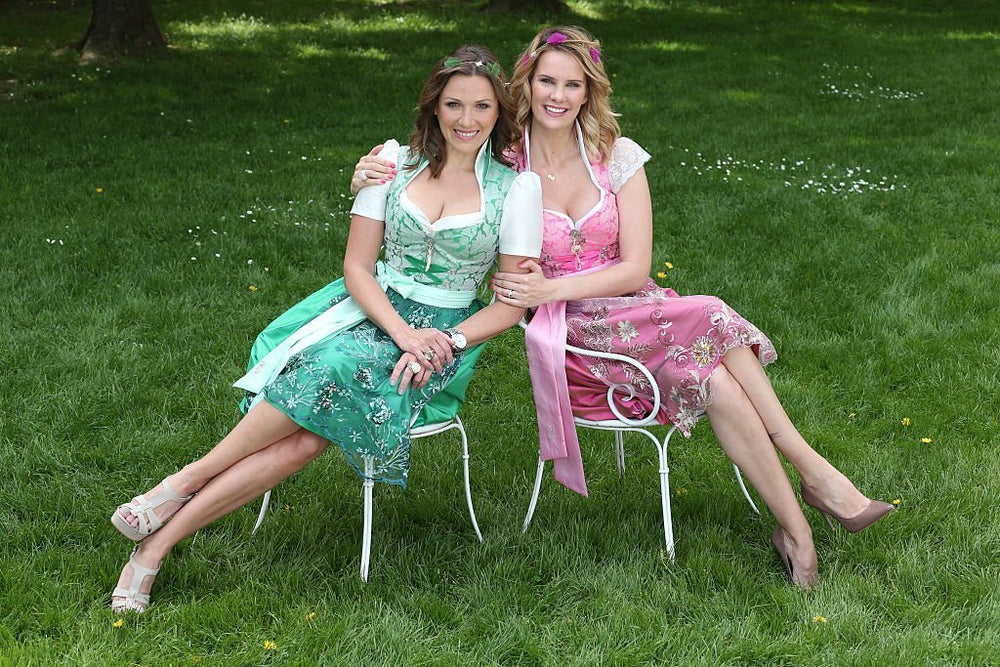
Turn the Dirndl inside out before submerging it in the soapy water, gently agitating the fabric without excessive scrubbing. After washing, rinse thoroughly with clean water and press out excess moisture without wringing or twisting the fabric. Air dry the Dirndl on a padded hanger in a shaded area.
For Dirndls with embellishments such as embroidery or lace, turn the garment inside out during washing to protect these details. Spot cleaning can be done for stains using a cotton swab dipped in mild detergent. When ironing, use the lowest heat setting and iron inside out, placing a cloth between the iron and fabric to prevent damage.By following these guidelines, you can maintain your Dirndl’s charm and ensure it remains a cherished part of your wardrobe for generations to come.
Dirndl Costumes Fashion Trends for Upcoming Festivals
Dirndl fashion trends for upcoming festivals, particularly Oktoberfest 2025, showcase a blend of tradition and modernity, emphasizing elegance and individuality. Key trends include the resurgence of velvet dirndls, which offer a luxurious touch and are favored for their soft texture and sophisticated appearance. Monochrome outfits are gaining popularity, with colors like apricot creating fresh, summery looks.
These outfits often feature coordinated skirts, aprons, and blouses in the same hue, resulting in a harmonious and understated style.Another trend is the incorporation of integrated sleeves into dirndls, moving away from traditional blouses. V-neck designs are particularly in vogue, adding a festive flair. Additionally, puffed sleeves are making a comeback, providing a romantic twist to the classic silhouette.While bold colors such as royal blue and deep red dominate the palette, pastels and nature-inspired hues also remain relevant.
The focus is shifting towards subtle designs with minimal embellishments; overloaded dirndls with excessive lace or glitter are considered out of fashion. Instead, the emphasis is on quality fabrics and elegant cuts that allow wearers to express their personal style confidently. As festival season approaches, these trends promise to make a striking statement at Oktoberfest and other celebrations.
conclusion Dirndl Costumes
In conclusion, the Dirndl Costumes more than just a traditional Bavarian dress; it is a rich symbol of cultural heritage and identity that has evolved over centuries. As it continues to adapt to contemporary fashion trends, the Dirndl remains a beloved choice for festivals and celebrations, embodying both elegance and tradition.
The key components of the Dirndl Costumes, including the bodice, skirt, apron, and blouse, come together to create a timeless look that can be personalized through thoughtful accessorizing.As we look forward to upcoming festivals, the latest trends reflect a harmonious blend of classic styles and modern interpretations, allowing wearers to express their individuality while honoring their roots.
By understanding the significance of each element of the Dirndl Costumes and practicing proper care and maintenance, enthusiasts can ensure that this iconic garment remains a cherished part of their wardrobe for years to come. Whether you’re attending Oktoberfest or a local celebration, wearing a Dirndl is not only a fashion statement but also a celebration of Bavarian culture and community.
